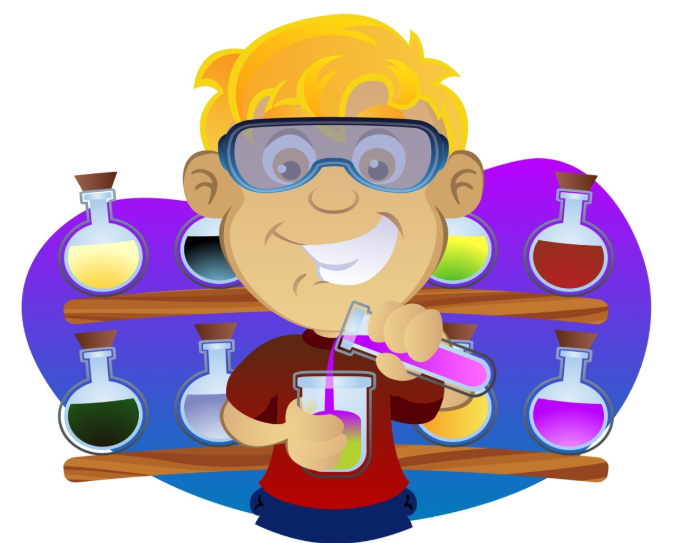
Physical changes are usually easier to reverse than chemical ones. For example, a large piece of paper can be restored by taping or pasting the small pieces of paper together again. Bending, breaking and crushing are other ways to change matter physically. Cutting up a piece of paper is an example of a physical change. The paper is different, it is now in small pieces instead of the larger piece it started out as. But the chemical composition of the smaller pieces of paper is the same as the chemical composition of the larger piece of paper.
A chemical change is when the chemical composition of a substance changes. This is usually caused by a chemical reaction. Chemical reactions begin with one or more substances called reactants and end with at least one completely new substance or product. Chemical change can be sudden or they can take place over very long periods of time. They may be obvious or we may not be able to notice anything at all. It is only by studying the chemicals before and afterward that we can tell whether a change has occurred.
Facts about Physical Change
As physical changes are often easy to reverse and also called temporary changes. For example, common salt dissolves in water to form a salt solution. If we heat the salt solution the water evaporates leaving the common salt in it. As a result of physical change, a substance can’t change chemical composition but change its form. Physical changes are usually reversible and temporary.
- Dissolving some sugar crystals in water – The water becomes sweet in taste, which shows that the molecules of sugar are present in water. Evaporate the sugar solution in a Chinese dish over a Bunsen burner or a spirit lamp. A white residue is obtained in the china dish. All the properties of this residue are identical to sugar, which was earlier dissolved in water. Thus we find that in this case no new substance is formed.
- When the electric heater is switched on what changes can happen? The element of the heater becomes red hot and gives heat as well as light. Thus there is a change, but the element remains composed of the same material. In this experiment, no new substance is formed and change is temporary. Thus all electrical appliances show physical change when switched on.
Characteristics of Chemical Change
Chemical changes are more permanent than physical changes. They cannot be easily reversed because chemical bonds cannot be easily broken. An example of this is the formation of rust. Rust consists of hydrated iron(III) oxides. It is formed by a reaction between iron, water, and oxygen. It would seem an easy solution to just scrape the rust from our bicycles to reveal the shiny, strong metal beneath. However, the metal beneath will be thin and corroded. Rusting cannot be easily reversed, and further rusting can only be prevented by coating the metal so that oxygen and water cannot attack it.
Everything in this universe undergoes changes. In our daily life, we observe any changes around us. These changes can be observed by us at home, school, playground, garden, parks and other places. A change can be desirable or undesirable depending upon the effect it creates.